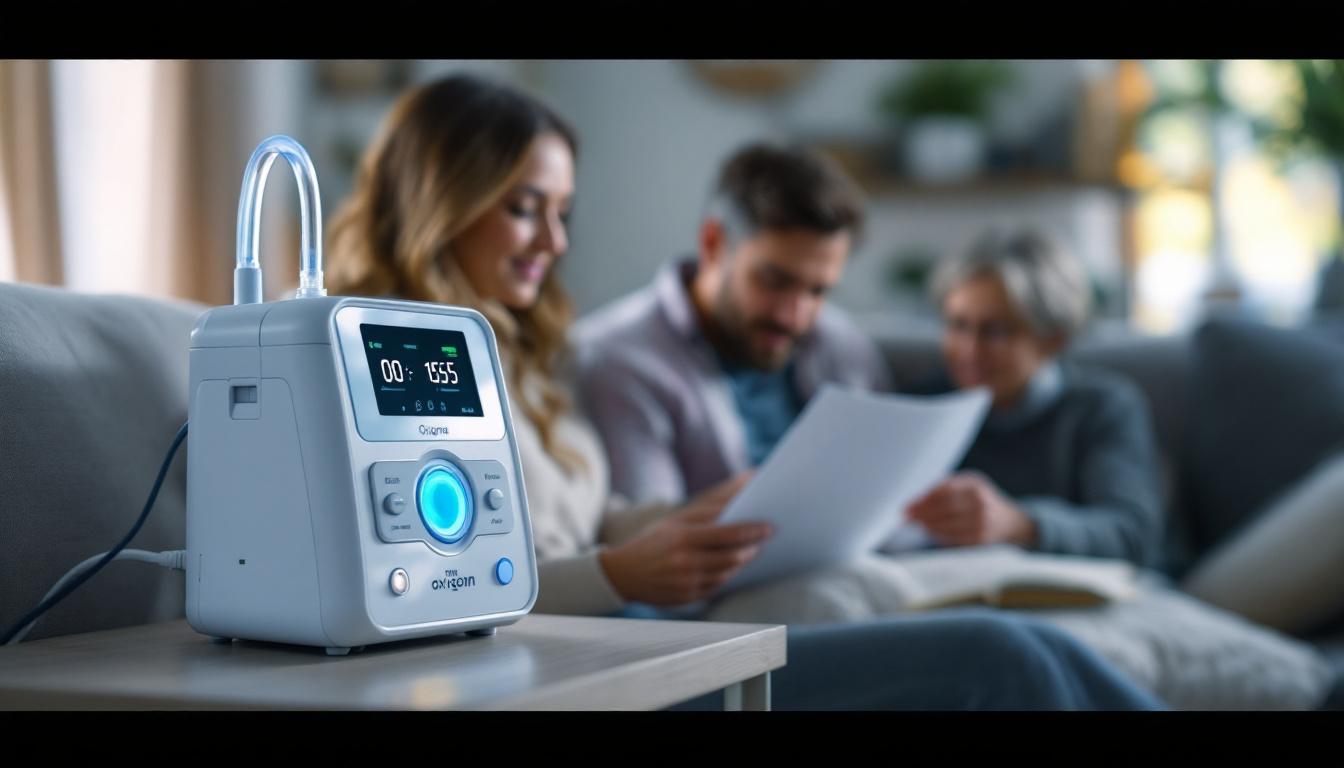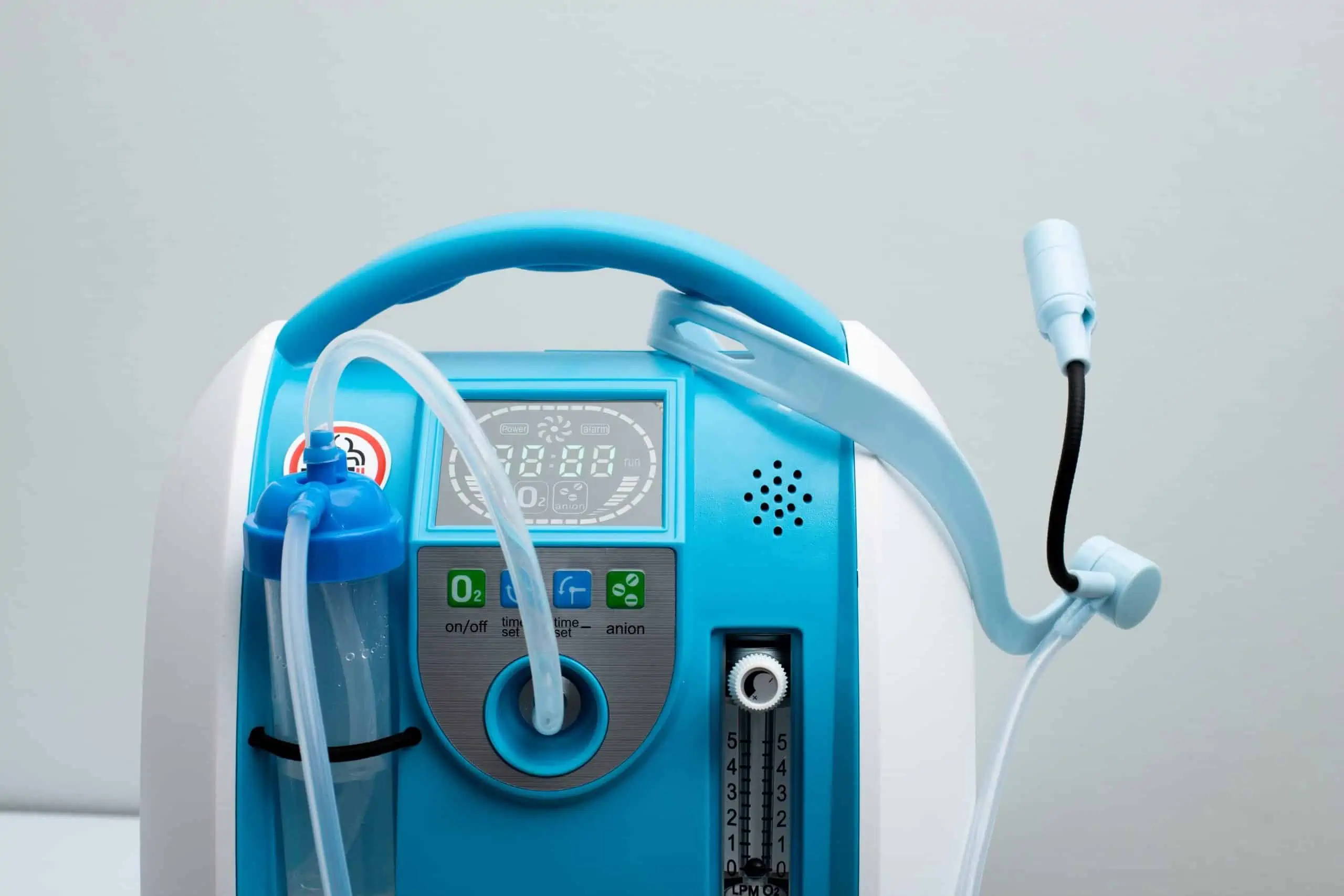In the realm of healthcare, the provision of oxygen therapy has become an essential component for patients suffering from chronic respiratory conditions. Home oxygen machines, also known as oxygen concentrators, have emerged as a vital resource for individuals requiring long-term oxygen therapy. This article explores the numerous benefits of these machines in long-term care settings, highlighting their role in enhancing the quality of life for patients and their families.
The Importance of Oxygen Therapy
Oxygen therapy is a medical treatment that involves the administration of oxygen to maintain adequate oxygen levels in the body. For patients with chronic obstructive pulmonary disease (COPD), pulmonary fibrosis, and other respiratory disorders, oxygen therapy can be life-changing. It alleviates symptoms such as breathlessness, fatigue, and confusion, enabling patients to engage more fully in their daily activities.
Understanding Chronic Respiratory Conditions
Chronic respiratory conditions are among the leading causes of morbidity and mortality worldwide. Conditions such as COPD and asthma can significantly impair lung function, leading to decreased oxygen saturation in the blood. This deficiency can result in a cascade of health issues, making the need for supplemental oxygen critical for many patients.
Home oxygen machines work by drawing in ambient air and filtering it to concentrate the oxygen content. These devices are designed to be user-friendly, often featuring simple controls and displays that allow patients or caregivers to monitor oxygen levels easily. Unlike traditional oxygen tanks, which require refilling and can be cumbersome, oxygen concentrators provide a continuous supply of oxygen, making them a more convenient option for long-term use.

As these conditions progress, patients often find themselves requiring more intensive care. Home oxygen machines provide a practical solution, allowing for the administration of oxygen in the comfort of one’s home, which can reduce the need for frequent hospital visits. Furthermore, the psychological benefits of being at home cannot be overstated; patients often experience reduced anxiety and improved mental well-being when surrounded by familiar environments and loved ones. This holistic approach to treatment not only addresses the physical symptoms but also contributes significantly to the overall quality of life for individuals managing chronic respiratory conditions.
Learn more on: CPAP Mask Brands Reviewed: Which One Is Right for You
How Home Oxygen Machines Work
Moreover, modern oxygen concentrators are equipped with advanced technology that enhances their efficiency and reliability. Many models now include features such as alarms for low oxygen levels or power outages, ensuring that patients are alerted to any issues that may arise. Additionally, some devices are portable, allowing patients to maintain an active lifestyle while receiving their necessary oxygen therapy. This mobility means that individuals can participate in social activities, travel, or even enjoy a simple walk in the park, all while managing their condition effectively. The integration of such technology into oxygen therapy not only improves adherence to treatment but also empowers patients to take control of their health in ways that were previously unimaginable.
Benefits of Home Oxygen Machines
The advantages of using home oxygen machines extend beyond mere convenience. They encompass a range of physical, emotional, and social benefits that can significantly improve the overall well-being of patients.

Enhanced Quality of Life
One of the most significant benefits of home oxygen therapy is the enhancement of quality of life. Patients who receive adequate oxygen levels report feeling more energetic and less fatigued, enabling them to participate in activities they enjoy. This improvement can foster a greater sense of independence, allowing individuals to manage their daily routines without constant assistance.
Moreover, the psychological impact of improved oxygenation cannot be overstated. Many patients experience a reduction in anxiety and depression symptoms as their physical health improves. The ability to engage in social interactions and hobbies can lead to a more fulfilling life, which is crucial for mental well-being. Find more about depression on https://www.nimh.nih.gov/health/topics/depression
Cost-Effectiveness
Home oxygen machines can also be a cost-effective solution for long-term care. While the initial investment may seem significant, the long-term savings can be substantial. Patients using oxygen concentrators often experience fewer hospital admissions and emergency room visits, which can dramatically reduce healthcare costs over time.
Additionally, many health insurance plans in Australia provide coverage for home oxygen therapy, making it more accessible for patients in need. This financial support can alleviate some of the burdens associated with managing chronic respiratory conditions.
Improved Patient Compliance
Compliance with prescribed oxygen therapy is crucial for achieving optimal health outcomes. Home oxygen machines are designed to be user-friendly, encouraging patients to adhere to their treatment plans. The convenience of having a continuous supply of oxygen at home means patients are less likely to skip sessions or reduce their oxygen intake due to inconvenience.
Furthermore, many modern machines are equipped with features such as alarms and notifications to alert users when maintenance is required or when oxygen levels are low. This added layer of support helps ensure that patients remain compliant with their therapy, ultimately leading to better health outcomes.
Considerations for Choosing a Home Oxygen Machine
When selecting a home oxygen machine, several factors must be considered to ensure that the device meets the patient’s specific needs. Understanding these considerations can help caregivers and patients make informed decisions.
Flow Rate Requirements
Different patients require varying flow rates of oxygen, which is typically measured in litres per minute (LPM). It is essential to consult with a healthcare professional to determine the appropriate flow rate based on the patient’s condition. Some machines can deliver higher flow rates, while others are designed for lower requirements, making it crucial to select a device that aligns with the patient’s needs.
Portability and Size
For many patients, the ability to move their oxygen machine around the house or take it on outings is vital. Portable oxygen concentrators are available that are lightweight and easy to transport. These devices can provide the necessary oxygen supply while allowing patients to maintain an active lifestyle.
In contrast, stationary oxygen concentrators are larger and designed for home use. While they may not be as portable, they often have higher output capabilities, making them suitable for patients with more severe oxygen needs.
Noise Levels and Maintenance
Noise can be a significant factor when choosing a home oxygen machine. Some devices operate quietly, while others may produce noticeable sounds during operation. Patients and caregivers should consider the noise levels, especially if the machine will be used in a bedroom or shared living space.
Additionally, maintenance requirements vary by model. Some machines require regular cleaning and filter changes, while others may have more straightforward maintenance protocols. Understanding these requirements can help ensure that the device remains in optimal working condition. Click here to find more about maintenance.
Support and Education for Patients and Caregivers
Implementing home oxygen therapy is not solely about providing a machine; it also involves education and support for patients and their caregivers. Ensuring that users understand how to operate the machine correctly and recognise the signs of potential complications is vital for effective therapy.
Training and Resources
Healthcare providers should offer comprehensive training on how to use home oxygen machines. This training should cover topics such as setting the flow rate, changing filters, and troubleshooting common issues. Providing written materials and access to online resources can further enhance understanding and confidence in using the equipment.
Ongoing Support
Regular follow-ups with healthcare professionals are essential to monitor the patient’s condition and adjust oxygen therapy as needed. This ongoing support can help identify any issues early on, ensuring that patients receive the best possible care. Telehealth services can also provide a convenient way for patients to stay connected with their healthcare team without the need for frequent in-person visits.
Conclusion
Home oxygen machines play a crucial role in the long-term care of patients with chronic respiratory conditions. They offer numerous benefits, including improved quality of life, cost-effectiveness, and enhanced patient compliance. By understanding the importance of oxygen therapy and considering the various factors involved in selecting a machine, patients and caregivers can make informed decisions that lead to better health outcomes.
As the healthcare landscape continues to evolve, the integration of home oxygen therapy into long-term care will remain vital. With the right support and education, patients can thrive in their home environments, enjoying a better quality of life while managing their respiratory conditions effectively.

